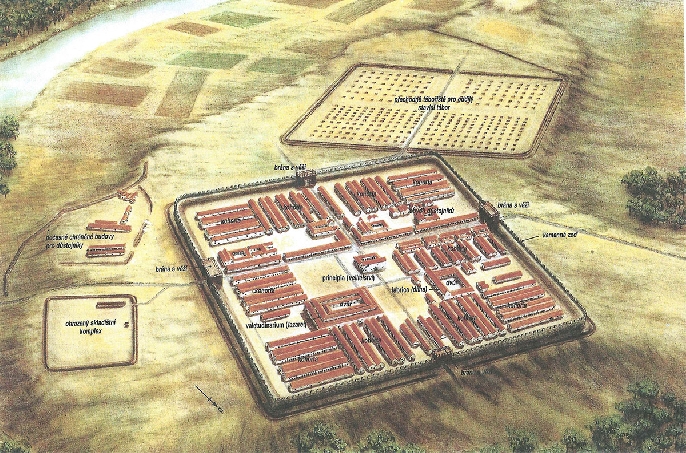Camp
Initially, Romans were only building temporary camps for their troops in the territory of the Roman Empire. This changed after the great expansion of Caesar and then Augustus before the turn of the millennium. Conquered territories and new boundaries had to be secured. Construction of permanent camps was concentrated along the new empire boundary (limes romanus) on the Danube and Rhine. They were used as permanent bases for commands of various sizes (e.g. legion, cohort, etc.). By the second century they were usually enclosed by two trenches and a wooden-earth rampart. After the Marcomannic Wars (166 – 180 AD) they were rebuilt to stone camps. The inner arrangements of the camps kept repeating. The camp was usually of a regular rectangle shape with at least four entries - gates. The camp axis comprised roads crossed at the right angle and leading to four gates. The inner development included barrack buildings, command, house for the commander and officers. Warehouses, stables, workshops, a hospital and spas could not miss in the camp

Source: 2000 JahreVarusschlacht Konflikt – Balázs Komoróczy: Der Militärschlag gegen die Markomannen und Quaden – ein archäologischer Survey – str 115, abb. 2


